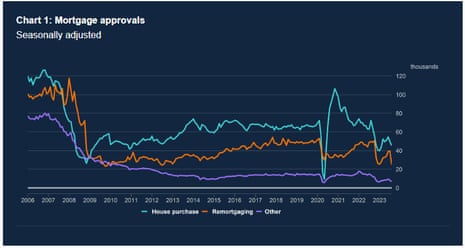UK recovery from pandemic faster than thought
The UK economy’s recovery from the Covid-19 pandemic has been faster than previously thought, today’s updated GDP data shows.
UK GDP is now estimated to be 1.8% above pre-pandemic levels by the second quarter of this year, the Office for National Statistics reports.
That’s a stronger recovery than Germany (whose economy is 0.2% larger than in Q4 2019) and France (1.7% larger).
But, it still leaves the UK behind the US, Canada, Italy and Japan, as the table at 7.48am shows).
Back in August, the ONS thought the UK economy was still 0.2% smaller than its pre-pandemic levels.
Head of National Accounts, Craig McLaren explains what the new GDP estimates mean and how revisions to the data impact the figures ⬇️ pic.twitter.com/Dvs5AXaVN7
— Office for National Statistics (ONS) (@ONS) September 29, 2023This will cheer the government, as ministers prepare to head to Manchester for the Conservative party conference.
Bloomberg says:
The UK economy is larger than previously thought, new figures show in a boost for Prime Minister Rishi Sunak days before his Conservative Party begins its annual conference.
The upward revision announced by the Office for National Statistics Friday means Britain is no longer lagging every other major industrial nation in its recovery from the pandemic. Germany and France now is at the bottom, with the UK third to last.
New figures show the UK economy is larger than previously thought, in a boost for Rishi Sunak days before his Conservative Party begins its annual conference https://t.co/75bybxPUVQ
— Bloomberg (@business) September 29, 2023Key events
UK mortgage approvals hit six-month low
Newsflash: UK mortgage approvals have fallen to their lowest level in six months, as high interest rates cool the housing market.
The Bank of England reports that net mortgage approvals for house purchases fell from 49,500 in July to 45,400 in August.
That’s the lowest number of home loans approved by lenders since February this year, and the latest sign that the 14 increases in UK interest rates since December 2021 have hit demand.
Net approvals for remortgaging (which only capture remortgaging with a different lender) saw “a significant decline” from 39,300 in July to 25,000 in August, the lowest since July 2012, the Bank says.

A report earlier this week showed that the number of first-time buyers in the UK has fallen by more than a fifth, as the jump in mortgage costs made it too expensive for some people to get onto the housing ladder.
Estate agent Knight Frank have updated their forecast for UK house prices, and now expect a larger fall this year.
They say:
Knight Frank now expect UK house prices to fall by 7% this year, more than our forecast of -5% in March
Next year, Knight Frank expect prices to fall by 4%, less than the 5% we forecast earlier this year
Forecasts for prime central London remains unchanged, but expect a slightly smaller fall (-3% rather than -4%) this year in prime outer London and a marginally stronger recovery from 2026
Just in: UK average mortgage rates continue to drop, as lenders offer better deals amid hopes that the Bank of England has ended raising interest rates.
Data provider Moneyfacts reports that:
The average 2-year fixed residential mortgage rate today is 6.48%. This is down from an average rate of 6.50% on the previous working day.
The average 5-year fixed residential mortgage rate today is 5.98%. This is down from an average rate of 5.99% on the previous working day.
Today’s GDP data is full of interesting nuggets.
And one is that UK household disposable incomes grew faster than inflation in April-June, having stagnated in January-March due to fast-rising prices.
Real households’ disposable income (RHDI) grew by 1.2% in Quarter 2, the ONS reports.
Household savings also increased in the quarter, which suggests that spending did not rise in line with this pickup in RHDI.
Sandra Horsfield, economist at Investec, explains:
Meanwhile, data for Q2 GDP broken down by sector, published for the first time today in accordance with the typical release cycle, revealed that household disposable income growth exceeded inflation, meaning there was a 1.2% quarterly increase in real terms – not least thanks to the rise in benefit payments in line with past inflation.
Consumption growth did not keep pace with this rise, meaning the household saving ratio jumped from 7.9% in Q1 to 9.1% in Q2.
Stocks have opened higher in London, as the upgraded UK GDP data brings some cheer to the City.
The FTSE 100 index is 41 points higher (+0.5%) at 7643 points, taking its gains this month to +2.8% – outperforming Wall Street which is in the red for September.
Retail chain JD Sports (+5.8%) is leading the risers, followed by online grocery group Ocado (+4.2%) and specialty chemicals maker Croda (+2.6%).
Neil Wilson of Markets.com says a “messy” September is coming to an end, with the FTSE 100 benefiting from higher oil prices:
BP and Shell have rallied 10% through September as crude broke to its highest in a year this month.
Elsewhere the seasonal weakness of September asserted itself once more – the S&P 500 and Nasdaq slipping around 5%, whilst the DAX and broader European equities ex-UK are down about 3%.
The DAX has fallen about 4% in the quarter, but still +10% YTD, whilst the S&P 500 is roughly 3% lower in the quarter and +12% YTD. Bonds clearly blown up a bit this month and the dollar and oil have risen sharply once more. WTI +30% QTD is the best quarter since Q1 2022.
Victoria Scholar, head of investment at interactive investor, sums up this morning’s UK economic report:
“The UK economy grew by 0.2 percent in the second quarter following growth of 0.3% in the first quarter which was revised higher from 0.1%. Growth in the latest quarter was driven by a 1.2% increase in the production sector as falling input prices relieved pressure on manufacturers. Real households’ disposable income grew by 1.2% in the quarter and the household savings ratio grew by 9.1%.
GDP is now estimated to be 1.8% above pre-coronavirus levels. Following recent revisions, the UK is no longer at the bottom of the leaderboard in terms of the recovery of advanced economies since covid. Now it is understood to have grown faster than Germany and France at 0.2% and 1.7% respectively. It has been a shock turn of events that the narrative around the UK’s sluggish post covid recovery has been completely flipped on its head because of statistical revisions.
Chancellor Jeremy Hunt said the UK GDP data out today once again proves the doubters wrong.
Despite this, the pound is on track for its worst month in a year since the mini-Budget turmoil in 2022. The depreciation has been driven by demand for US dollars amid expectations of ‘higher for longer’ interest rates as well as risk-off sentiment in the markets.
There are also growing concerns about the risk of a UK economic slowdown or even a recession in the months ahead, dampening demand for sterling, as elevated inflation and higher interest rates take their toll.”
Pound lifted by GDP upgrade
The news that Britain’s economy has recovered faster than thought has given the pound a much-needed lift.
Sterling is up half a cent this morning at $1.225, which is a cent and a half above the six-month low hit on Wednesday.
However, that still leaves the pound on track for its worst month in a year (see opening post for details), down almost 3.5% in September.
Sophie Lund-Yates, lead equity analyst at Hargreaves Lansdown, explains:
“The UK economy has shown signs of life. GDP is now 1.8% ahead of pre-pandemic levels as the economy grew 0.2% in the second quarter from the first three months of the year. Crucially, GDP was up 0.6% from the same period the previous year, which was better than expected and has given the pound a shove in the right direction.
A particular area of strength has been manufacturing, especially motor vehicles. While momentum is overall positive, these levels of growth aren’t exactly shooting the lights out. Higher interest rates are playing their part in turning the nation’s economic thermostat down and this will play a key role in upcoming interest rate decisions.
The UK economy grew more than all its G7 major peers in both 2021 and 2022. Meanwhile, 2023 is looking good thanks to the latest GDP upgrades from the ONS. $GBP pic.twitter.com/cFuo1jIOD3
— Pound Sterling Live (@thepoundlive) September 29, 2023This morning’s snapshot of economic data is not significant enough to change the overall picture of a flatlining economy, fears Jake Finney, economist at PwC.
Finney explains:
Output is only 0.4% higher than where it was at the same time a year ago. If anything, the GDP data revisions may marginally dampen the UK’s growth prospects for 2023 and 2024 as they reduce the potential for bounce-back growth.
“Ultimately we expect that growth will remain sluggish while monetary policy tightening continues to weigh on activity. We expect annual GDP growth to remain significantly below trend this year and next. While the surprise -0.5% decrease in July alongside the PMI survey data suggests we may see a slight contraction in Q3.”
Economic forecasting group the EY Item Club also fears that the UK’s economic prospects look ‘sluggish’, despite this morning’s welcome news that the recovery has been stronger than thought.
Martin Beck, chief economic advisor to the EY ITEM Club, says:
“Notwithstanding more momentum than thought in H1 2023, the EY ITEM Club think the economy will see only marginal growth over the rest of this year and into 2024.
A rising number of households are seeing a jump in mortgage payments, still-high inflation, and frozen tax brackets mean fiscal drag is eroding spending power and the jobs market is weakening – threatening consumer confidence. On the other hand, falling inflation means real wages have started to rise again and interest rates look to have peaked much lower than many had feared only a few months ago.
As a result, the EY ITEM Club thinks that while growth is set to be weak, a serious downturn should be avoided.”
Capital Economics: UK still heading for 'mild recession'
Despite Jeremy Hunt’s optimism, Capital Economics’ deputy chief UK economist, Ruth Gregory, argues that overall, today’s release changes very little.
She told clients this morning:
The final Q2 2023 GDP data release shows that the economy was a bit more resilient in the first half of this year than we previously thought. But other indicators suggest this is now fading. We still think that higher interest rates will trigger a mild recession involving a 0.5% fall in GDP in the coming quarters.
The data leaves the economy still only 0.6% above its level a year ago, Gregory points out, adding:
It does not change the big picture that the economy has lagged behind all other G7 countries aside from Germany and France since the pandemic. And that’s before the full drag from higher interest rates has been felt.
Hunt: UK recovering faster than anyone previously thought
Chancellor of the Exchequer Jeremy Hunt has hailed the news that the UK has grown faster than Germany and France since 2020.
He’s also repeated a recent theme that the ‘doubters’ are being proved wrong by the latest upward revision to UK economic data, saying:
“We know that the British economy recovered faster from the pandemic than anyone previously thought and data out today once again proves the doubters wrong.
We were among the fastest countries in the G7 to recover from the pandemic and since 2020 we have grown faster than France and Germany.
“The best way to continue this growth is to stick to our plan to halve inflation this year, with the IMF forecasting that we will grow more than Germany, France, and Italy in the longer term.”
UK recovery from pandemic faster than thought
The UK economy’s recovery from the Covid-19 pandemic has been faster than previously thought, today’s updated GDP data shows.
UK GDP is now estimated to be 1.8% above pre-pandemic levels by the second quarter of this year, the Office for National Statistics reports.
That’s a stronger recovery than Germany (whose economy is 0.2% larger than in Q4 2019) and France (1.7% larger).
But, it still leaves the UK behind the US, Canada, Italy and Japan, as the table at 7.48am shows).
Back in August, the ONS thought the UK economy was still 0.2% smaller than its pre-pandemic levels.
Head of National Accounts, Craig McLaren explains what the new GDP estimates mean and how revisions to the data impact the figures ⬇️ pic.twitter.com/Dvs5AXaVN7
— Office for National Statistics (ONS) (@ONS) September 29, 2023This will cheer the government, as ministers prepare to head to Manchester for the Conservative party conference.
Bloomberg says:
The UK economy is larger than previously thought, new figures show in a boost for Prime Minister Rishi Sunak days before his Conservative Party begins its annual conference.
The upward revision announced by the Office for National Statistics Friday means Britain is no longer lagging every other major industrial nation in its recovery from the pandemic. Germany and France now is at the bottom, with the UK third to last.
New figures show the UK economy is larger than previously thought, in a boost for Rishi Sunak days before his Conservative Party begins its annual conference https://t.co/75bybxPUVQ
— Bloomberg (@business) September 29, 2023Today’s GDP report shows that the UK economy grew faster than other G7 rivals in 2022 (with growth revised up from 4.1% to 4.3%), and also in 2021 (with 8.7% growth).

Remember, that follows the 10.4% fall in UK GDP in 2020 during the first year of the Covid-19 pandemic.
UK economy stronger than earlier thought
Britain’s economy has grown faster than previously thought this year, new data just released by the Office for National Statistics shows.
The latest UK GDP quarterly national accounts shows that the economy grew faster than expected at the start of this year.
UK GDP is now estimated to have increased by 0.3% in the January-March quarter, the ONS says, up from an earlier estimate of just 0.1% growth.
Growth was also faster than expected last year, GDP is now estimated to have increased by 4.3% in 2022, revised from a first estimate of 4.1%.

Q2’s data was unrevised, though – still showing 0.2% growth.
These changes follow earlier revisions from the ONS at the end of August, which showed the UK economy shrank less and bounced back faster during the pandemic.
ONS chief economist Grant Fitzner says:
“Today’s latest figures show the GDP growth rate is almost unrevised over the last 18 months.
“Our new estimates indicate a stronger performance for professional and scientific businesses due to improved data sources.
“Meanwhile, healthcare grew less because of new near real-time information showing the cost of delivering services.”
UK gross domestic product is estimated to have increased by 0.2% in Quarter 2 (Apr to Jun) 2023, unrevised.
It is now estimated to have increased by 0.3% in Quarter 1, revised up from 0.1%, whilst growth across all quarters of 2022 is unrevised.
Introduction: Pound on track for worst month in a year
Good morning, and welcome to our rolling coverage of business, the financial markets and the world economy.
The pound is heading towards its worst month since the turmoil of last year’s mini-budget, amid hopes that UK interest rates may have peaked, and fears that a recession could be looming.
With just one trading day to go, September has been a poor month for sterling. The currency has shed four and a half cents against the US dollar, or 3.5%, this month to just over $1.22 this morning.
That would be the worst performance in 12 months, since panic over Liz Truss’s plan for unfunded tax cuts a year ago sent sterling reeling to a record low.
So what has caused the pound’s weakness, sending it to a six-month low this week.
One reason is concerns that the UK economy could stagnate, or worse, in the coming months, with the eurozone economy also appearing to weaken.
Matthew Ryan, head of market strategy at global financial services firm Ebury, explains:
“Both the euro and sterling have slumped to six-month lows on the US dollar this week. While the moves can be largely attributed to a strong greenback, both currencies are currently underperforming their G10 counterparts. Aside from valuation, concerns over the state of both economies have contributed to the sell-offs.
Economic news out of the UK, in particular, has turned decidedly bleak in recent weeks. Last week’s business activity PMIs and retail sales reports both missed economists’ expectations, and Citigroup’s UK economic surprise index is now teetering just above the level of 0, and its lowest level since March.
Another factor is a repricing of interest rate expectations. With inflation falling in July and August, the Bank of England is no longer expected to raise borrowing costs several more times. UK interest rates may even have peaked.
But across the Atlantic, the Federal Reserve is expected to push US interest rates higher before the end of the year, and keep them higher for longer than previously expected.
That ‘higher for longer’ theme has dominated markets this month, sending the US dollar to 10-month highs against a basket of currencies, and weakening government bond prices.
September is often a weak month for equities, and so far this month the US S&P 500 index is down almost 5%, while the tech-focused Nasdaq has lost 6%.
Britain’s FTSE 100 is up 2%, partly lifted by energy companies as the oil has also risen this month.
The agenda
7am BST: UK Q2 GDP (final estimate) and economic accounts
9.30am BST: UK mortgage approvals figures for August
10am BST: Eurozone inflation flash estimate for September
1.30pm BST: US PCE measure of inflation

.png)









